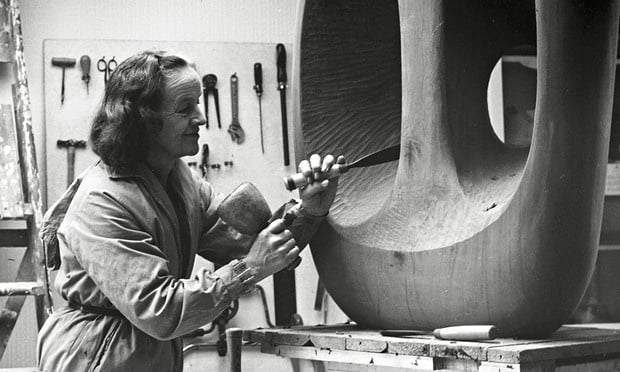
Photo: Val Wilmer /Hepworth Estate
Barbara Hepworth began working in bronze late and reluctantly. The British artist’s loyalty to wood and stone stemmed partly from her informal apprenticeship as a twenty-something in Italy under master carver Giovanni Ardini. Tellingly, when Hepworth returned to England in 1926 and co-founded the experimental art group Unit One, she called herself a carver.
It was an identity Hepworth kept until the mid-1950s when an abundance of government commissions for large public works—and the strong encouragement of dealers—convinced her to begin casting in bronze. Even then, Hepworth remained in control. She took over a former dance hall across the street from her studio in St. Ives, southwestern England, to create large-scale models. When she signed with Marlborough Gallery, the contract stipulated that they pay her production costs, which was almost unheard of at the time.
Another side of this artistic control was Hepworth’s relationship with Art Bronze Foundry, the London-based company that became a key collaborator for realizing her large bronze sculptures. It’s a story that is partly told through the letters and draft sketches Hepworth exchanged with Michael Gaskin, a bronze caster at the foundry who became a close associate.
Correspondence from sculptor Barbara Hepworth. Courtesy of Chiswick Auctions.
A collection of 39 letters and five sketches dated between 1960 and 1971 are set to arrive at Chiswick Auctions, London, on November 26 where they are expected to fetch between £15,000 and £25,000 ($18,800 and $31,200).
Hepworth emerges from the correspondence as a keen-eyed, demanding, yet appreciative artist (she says please and thank you.) For Ascending Form (1958), a work in which a large diamond grows out of a smaller one, the letter specified where and how cuts are to be made as well as the order of casting. Still, Hepworth writes, the process needs “to be discussed by telephone.” For Sphere with I nner Form (1963), an iconic work sometimes seen as a metaphor for pregnancy, she rather charmingly notes “big sphere, can it be done?”
Hepworth’s shift to bronze enabled the artist to acquire public commissions and create multiple castings, factors which helped burnish her status in Britain and beyond. Still, placing works outdoors (and around the world) created problems, ones Hepworth often had to fix in partnership with the Art Bronze Foundry.
Correspondence from sculptor Barbara Hepworth. Courtesy of Chiswick Auctions.
In one instance, the display of Ascending Form in a sculpture park outside of Tokyo, Japan, damaged the patina. “The atmosphere must be incredibly polluted,” Hepworth writes, “I shudder to think what the big bronze they bought from me is like.” One of the works had to be repatinated.
In another, Cantate Domino (1958), a sparser hollowed out impression of Ascending Form, was cracked during its transit across America as part of exhibition of British artists. “I have asked that this cast be sent straight to you for a proper repair,” Hepworth writes. “Could you send me your views on the damage when you see the cast.”
In addition to Hepworth’s letters, the lot at Chiswick Auctions includes 31 from her secretary, 24 carbon copy letters from the Foundry to the artist, and 4 photographs of her work from the archive.